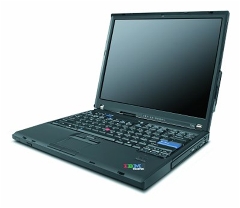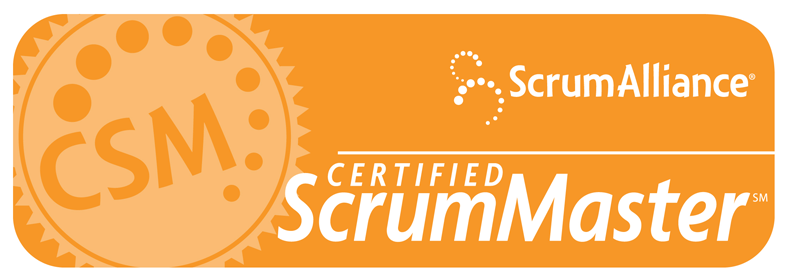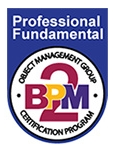Today I gathered my first experiences with GPS technology. To be honest I ignored the entire GPS hype till last week, as a friend of mine offered me a GPS mouse. I have several usecases in mind, so I will create follow-posts. In general I look for free (or cheep) software only and execute tests with a cell phone and a laptop. Depending on the device, the usecase setup changes slightly…
Usecase 1: Mobile Location Tracking
The location tracking is based on a continuous storage of the location information and creation of the motion track. In addition to the coordinates (x,y,z) information about speed and timestamps can be saved. Later the trace can be converted to different data formats or displayed graphically. A popular representation is a overlay on one of the many GIS Service maps available on the Internet (Google Maps, Yahoo Maps, Microsoft Virtual Earth, etc..). I will also evaluate the software for conversion and representation of data.
Usecase 1.1: Using a Laptop
The easiest device to find software for, is a personal computer. So I expect a free software to be available, to record the data. Due to the size of the laptop, the test can only be executed using a car. In addition, no additional Internet connection should be required by the software.
Usecase 1.2: Using a Cell Phone
Due to the inability to use laptop for recording during bicycle or sport-tours, I consider to use a cell phone for track recording (and storage of the information on a flash card).
Usecase 2: Navigation
After simple information storage additional task of computation of a route can be considered. Thus the navigation usecase will be tested. Here I expect a variety of functions, for different styles of maps, user interfaces, etc.
Usecase 3: Wardriving
Wardriving is the act of searching for Wi-Fi wireless networks by a person in a moving vehicle using a Wi-Fi-equipped computer, such as a laptop, to detect the networks. Theoretically, it is useful to use a PDA, but since I don’t have one, only the laptop will be used. Due to inability of Wi-Fi by my cell phone, I also skip this setup.
General Hardware Setup
GPS Device: Navibe GB621 Bluetooth GPS Mouse (link)
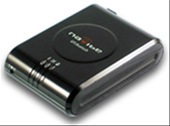
Product Features:
- High sensitivity, 12 parallel channels for fast acquisition and reacquisition
- Full navigation accuracy provided by Standard Positioning Service(SPS)
- Bluetooth version 1.1 compliant / Class 2 operation with up to 10m range
- Support standard NMEA 0183 protocol(Version. 3.0 GGA, GSA, GSV, RMC, VTG
- Support backup power to sustain internal clock
- Internal RTC (Real Time Clock)
- Easy to link with PDA and Notebook with Bluetooth 1.1 compliant
- Built-in rechargeable Lithium-ion battery without external power supply
- 3-color LED to show the status of Bluetooth, GPS and battery
- Support active antenna connector (MMCX) to getting better satellites
- ROHS compliant
Hardware Characteristics:
- BT-Modulation: FHSS / GFSK
- I/O Protocols: NMEA 0813
- RF Channels: 79
- Antenna: Bulit in patch antenna
- Input Sensitivity: -80 dBm
- Ext. Antenna
- Output Level: 4 dBm
- Connector: MMCX type*
- Baud Rate: 4800(default)
- Power Consumption: Under 200mA
- Power supply: +4.5V~5.5V (DC)
Performance:
- Receiver: 12 parallel channels
- Frequency: L1, 1575.42 MHz C/A code
- Acquisition Time (Open Sky and Stationary)
- Update rate: Once per second, continous
- Hot Start: Aprox. 2~6 seconds, typical 95%
- Warm Start: Aprox. 35~40 seconds, typical 95%
- Cold Start: Aprox. 50~60 seconds, typical 95%
- GPS Accuracy: Position: 2D RMA: aprox. 5m
- Sensitivity:
- Acquistion: -139 dBm (average) or less in normal mode
- Tracking: -152 dBm (average) or less
- Dynamics:
- Altitude: < 18000 meter maximum
- Velocity: < 500 meter/second maximum
- Acceleration: < 4g
Cell Phone: Nokia 6680
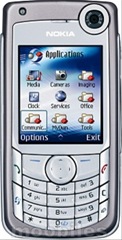 Key Features:
Key Features:
- Two integrated digital cameras: 1.3 megapixel and VGA
- Experience two-way video calls and see face-to-face as you talk in real time
- Video sharing capability
- High-resolution, 262,144-colour display
- Capture quality images and video
- Nokia XpressPrint printing solution: PictBridge, Bluetooth wireless technology, MultiMediaCard (MMC)
- Fast WCDMA and EDGE connections for broadband-speed browsing plus tri-band GSM phone with global roaming capability
- Convenient email access with automatic download to send images and view documents
- Calendar, contacts, and other personal information management features plus data printing
- Music player with stereo audio
Operating Frequency:
- Dual mode WCDMA/GSM operation and tri-band GSM coverage on up to five continents (GSM 900/1800/1900 and WCDMA 2100 networks)
- Automatic switching between bands and modes
Connectivity:
- Integrated Bluetooth wireless technology v.1.2
- USB 2.0 full speed via Pop-Port™ interface
- Nokia PC Suite connectivity with USB and Bluetooth wireless technology
- Local synchronisation of contacts and calendar to a compatible PC using compatible connection
- Remote over-the-air synchronization
- Send and receive images, video clips, graphics, and business cards via Bluetooth wireless technology
- Profiles with Bluetooth connectivity: Basic Printing Profile (BPP) using Image Print or Info Print applications, Human Interface Device Profile (HID) using Nokia Wireless Keyboard application
Java Applications:
- Java™ MIDP 2.0, CLDC 1.1 (Connected Limited Device Configuration (J2ME))
- Over-the-air download of Java™-based applications and games
Personal Computer: IBM/Lenovo T60p 2007VIF
- Processor:
- Intel Core 2 Duo, T7200
- Memory:
- 2 GB
- Graphic Card:
- ATI Mobility FireGL V5250
- Drives:
- 100GB, S-ATA-100, 7200 rpm
- Ultrabay DVD-RW
- Connectivity:
- Intel PRO/1000 PL NIC
- Intel PRO/Wireless 3945ABG
- Broadcom Bluetooth (WIDCOMM)
- IBM IR
- Operating System:
- Microsoft Windows XP, SP2
